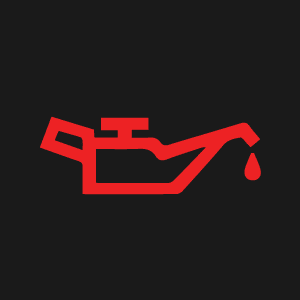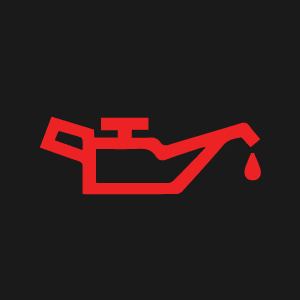If the oil light remains on after an oil change, check for low oil level or pressure. It could indicate a serious issue like an oil leak or faulty sensor.
Addressing the problem promptly is crucial to prevent engine damage. It is essential to diagnose the specific cause of the oil light being on to ensure your vehicle’s optimal performance and longevity. Ignoring the warning light could lead to costly repairs or even engine failure.
Regular maintenance and timely attention to warning lights are key to keeping your vehicle running smoothly. Be proactive in resolving any issues to maintain your car’s health and performance.

Credit: m.youtube.com
Introduction To The Oil Change Light
When it comes to maintaining your vehicle, one of the crucial indicators to pay attention to is the oil change light. This small yet significant dashboard warning can provide valuable insights into the condition of your engine oil and the overall health of your car. In this section, we’ll delve into why the oil change light matters and address some common misconceptions associated with it.
Why The Oil Change Light Matters
The oil change light is not something to be overlooked or dismissed. It serves as a proactive measure to ensure that your engine is properly lubricated and protected. Ignoring this indicator can lead to severe engine damage and costly repairs. By promptly addressing the oil change light, you can maintain the optimal performance and longevity of your vehicle.
Common Misconceptions
- Ignoring the Light: One common misconception is that the oil change light can be disregarded, especially if the oil has recently been changed. However, this light can signal issues beyond just the need for an oil change, such as low oil pressure or leaks.
- Assuming Recent Changes: Another misconception is assuming that the light is irrelevant if an oil change was recently performed. It’s essential to investigate the underlying causes and not dismiss the warning based solely on the recency of the oil change.

Credit: www.reddit.com
Typical Reasons For Oil Light Illumination
If the oil light stays on after an oil change, it could indicate low oil pressure or a leak. Ensure the correct oil type and quantity were used, and check for any oil filter issues. Proper diagnosis is crucial for addressing the problem effectively.
Low Oil Pressure
If your oil light comes on after an oil change, it could be an indication of low oil pressure. Low oil pressure can be caused by a variety of issues, including a damaged oil pump, clogged oil passages, or a faulty oil pressure sensor. If the oil pressure is too low, it can cause severe engine damage. It’s essential to stop driving your car immediately and have it towed to a mechanic for inspection and repair.Oil Sensor Malfunction
Another reason why your oil light could come on after an oil change is a malfunctioning oil sensor. The oil sensor is responsible for detecting the oil pressure and sending a signal to the car’s computer. If the sensor is faulty, it can send a false signal to the computer, indicating low oil pressure and causing the oil light to come on. In this case, replacing the oil sensor should solve the problem. In conclusion, if your oil light comes on after an oil change, it’s essential to diagnose the problem immediately to avoid severe engine damage. Low oil pressure and oil sensor malfunction are the two most typical reasons for oil light illumination. Ensure you take your car to a certified mechanic to diagnose and fix any oil-related issues.The Importance Of Oil Type And Quantity
Choosing the right oil and ensuring the correct quantity are crucial for the optimal performance and longevity of your vehicle’s engine. Using the appropriate oil type and maintaining the right oil levels are essential for preventing engine damage and maintaining smooth operation. Let’s delve into the significance of oil type and quantity in more detail.
Choosing The Right Oil
Using the correct oil type for your vehicle is essential to ensure proper lubrication, cooling, and protection of the engine components. Different engines require specific oil viscosities and formulations to operate efficiently. Refer to your vehicle’s owner’s manual or consult with a professional to determine the suitable oil type for your car.
Measuring Oil Levels Accurately
Accurately measuring oil levels is critical to prevent damage to the engine. An insufficient oil level can lead to increased friction and heat, potentially causing severe engine damage. On the other hand, overfilling the oil can also lead to operational issues and reduced engine efficiency. Utilize the dipstick or electronic oil level monitoring system to ensure the oil level is within the recommended range.
Checking And Resetting The Oil Change Light
Step-by-step Guide
Step 1: Locate the oil change light on your dashboard.
Step 2: Turn the ignition key to the “On” position without starting the engine.
Step 3: Press and hold the reset button until the light blinks or goes out.
Step 4: Release the button and start the engine to ensure the light is reset.
When To Seek Professional Help
If the oil change light persists after following the reset steps, it may indicate a more significant issue.
Consider seeking professional assistance to diagnose and address the problem effectively.
Troubleshooting Post-change Issues
When you notice your oil light still on after an oil change, it can be concerning. Understanding the possible reasons behind this issue and how to troubleshoot it effectively can help maintain your vehicle’s health.
Investigating Persistent Oil Light Activation
If your oil light remains illuminated after an oil change, it could indicate a deeper problem. Here are some common causes to investigate:
- Incorrect oil viscosity or type
- Low oil level
- Faulty oil pressure sensor
Dealing With Oil Leaks
Oil leaks can also trigger the oil light after an oil change. Here’s how you can address oil leaks:
- Inspect for visible leaks under the vehicle
- Check the oil drain plug and oil filter for tightness
- Examine the oil pan gasket for signs of wear
Understanding Oil Pressure
How Oil Pressure Works
Oil pressure is the force exerted by the oil as it flows through the engine to lubricate and protect its components. The oil pump pressurizes the oil and circulates it through the engine, ensuring that all moving parts are properly lubricated and friction is minimized.
Signs Of Oil Pressure Problems
Recognizing the signs of low oil pressure is crucial for maintaining the health of your engine. If you notice the oil pressure light illuminated on your dashboard, it could indicate a potential problem. Other signs of oil pressure issues include engine knocking or ticking, low oil levels, or oil leaks.
Diy Fixes For The Oil Change Light
If the oil light is still on after an oil change, first check the oil level and ensure it’s within the operating range. Then inspect for any oil leaks or a malfunctioning sensor that may be causing the issue. Regular maintenance and prompt attention are key to keeping your vehicle running smoothly.
DIY Fixes for the Oil Change Light It can be frustrating to see your oil change light still on after you’ve just changed your oil. However, before you take your car to a mechanic, there are some DIY fixes you can try. Simple Sensor Checks The first thing to check is the oil level sensor. This sensor is responsible for detecting the oil level in your car and will trigger the oil change light if it detects low oil levels. To check the sensor, locate it on your car’s engine and ensure it’s clean and free from any debris. If it’s dirty, clean it and see if the light goes off. Resetting the Maintenance Light Another DIY fix you can try is resetting the maintenance light. This light is often triggered by a timer or mileage calculation and can stay on even after an oil change. To reset the light, consult your car’s manual to find the specific procedure for your vehicle. Typically, it involves turning the ignition on and off in a specific sequence. If these DIY fixes do not solve the problem, there may be a more serious issue with your car, such as low oil pressure or an oil leak. It’s important to have a professional mechanic diagnose and fix the issue to ensure the safety and longevity of your vehicle. In conclusion, if your oil change light is still on after an oil change, don’t panic. Try these DIY fixes first before taking your car to a mechanic. Remember to always consult your car’s manual for specific instructions and to seek professional help if needed.
Credit: www.audizine.com
When To Consult A Mechanic
After changing the oil in your vehicle, it’s important to monitor the check oil light to ensure that it functions correctly. While a momentary illumination of the light after an oil change is normal, a persistent or flashing light could indicate underlying issues that require professional attention. Understanding when to consult a mechanic can help you address potential problems promptly and prevent more extensive damage to your vehicle.
Recognizing Complex Issues
When the check oil light remains illuminated after an oil change, it may indicate complex issues such as low oil pressure, oil leaks, or a faulty oil pressure sensor. These issues require professional diagnosis and repair to prevent engine damage. Additionally, if the light flashes or fluctuates, it could signify severe oil pressure irregularities that necessitate immediate attention from a qualified mechanic.
The Risks Of Delaying Professional Service
Delaying professional service after the check oil light stays on post oil change can lead to severe engine damage and potential safety hazards. Ignoring the warning signs may result in catastrophic engine failure, increased repair costs, and compromised vehicle performance. Seeking prompt professional assistance can help prevent these risks and ensure the continued reliability of your vehicle.
Preventative Measures For The Future
Regular Maintenance Schedules
Regular maintenance is crucial for the longevity and performance of your vehicle. It’s essential to adhere to the manufacturer’s recommended maintenance schedule, including oil changes, filter replacements, and other routine checks. By following a regular maintenance schedule, you can ensure that your vehicle operates efficiently and minimize the risk of unexpected issues.
Best Practices For Oil Changes
When it comes to oil changes, it’s important to follow best practices to avoid triggering the check oil light after an oil change. This includes using the correct type and quantity of oil, ensuring the oil filter is in good condition, and securely fastening the oil cap. Additionally, paying attention to any signs of oil leaks and monitoring the oil level can help prevent potential issues that may trigger the oil light.
Conclusion: Ensuring Vehicle Health
Ensuring vehicle health includes checking the oil light after an oil change. If the light remains on, it may indicate low oil pressure or a leak, requiring immediate attention for proper maintenance and performance. Regularly monitoring such indicators is crucial for a well-functioning vehicle.
Summarizing Key Takeaways
Check Oil Light After Oil Change: Ensure the oil change light is not indicating a more serious issue like low oil pressure or leaks.
Check Engine Light: Common triggers post oil change include wrong oil type, low oil level, or faulty oil filter.
Maintenance Required Light: Often triggered by timers or mileage calculations, remember to reset it after an oil change.
Emphasizing Routine Checks
Regular Oil Changes: Ensure oil changes are done correctly and timely to prevent engine issues.
Oil Level: Check oil levels regularly to avoid low oil pressure warnings.
Oil Pressure: Monitor oil pressure to catch any potential problems early on.
Resetting Indicators: Remember to reset maintenance lights after servicing your vehicle.
Frequently Asked Questions
Why Is My Oil Light On After An Oil Change?
The oil light may stay on due to low oil pressure or an oil leak. Ensure the correct oil type and quantity were used and check for any leaks or damage. If the issue persists, consult a mechanic for a thorough diagnosis.
Why Is My Check Engine Light On When I Just Got My Oil Changed?
The check engine light can come on after an oil change due to various issues such as wrong oil type, low oil level, or oil leaks. It’s important to diagnose the specific problem for a correct resolution.
Why Is My Maintenance Required Light On After An Oil Change?
If your maintenance required light is on after an oil change, it may be a simple timer or mileage calculation triggering it. However, if it comes on outside your typical oil change schedule or doesn’t go off after an oil change, it could be a sign of a more serious problem, such as low oil pressure or an oil leak.
Make sure to diagnose the specific issue to address it correctly.
Why Is My Car Saying I Need An Oil Change When I Just Got One?
The oil change light may still be on due to a missed reset after the oil change.
Conclusion
If your oil light stays on post oil change, it might indicate low oil pressure or an oil leak. It’s crucial to address these issues promptly to prevent further damage to your vehicle. Regular maintenance and proper oil change procedures are key to ensuring your car’s optimal performance.


